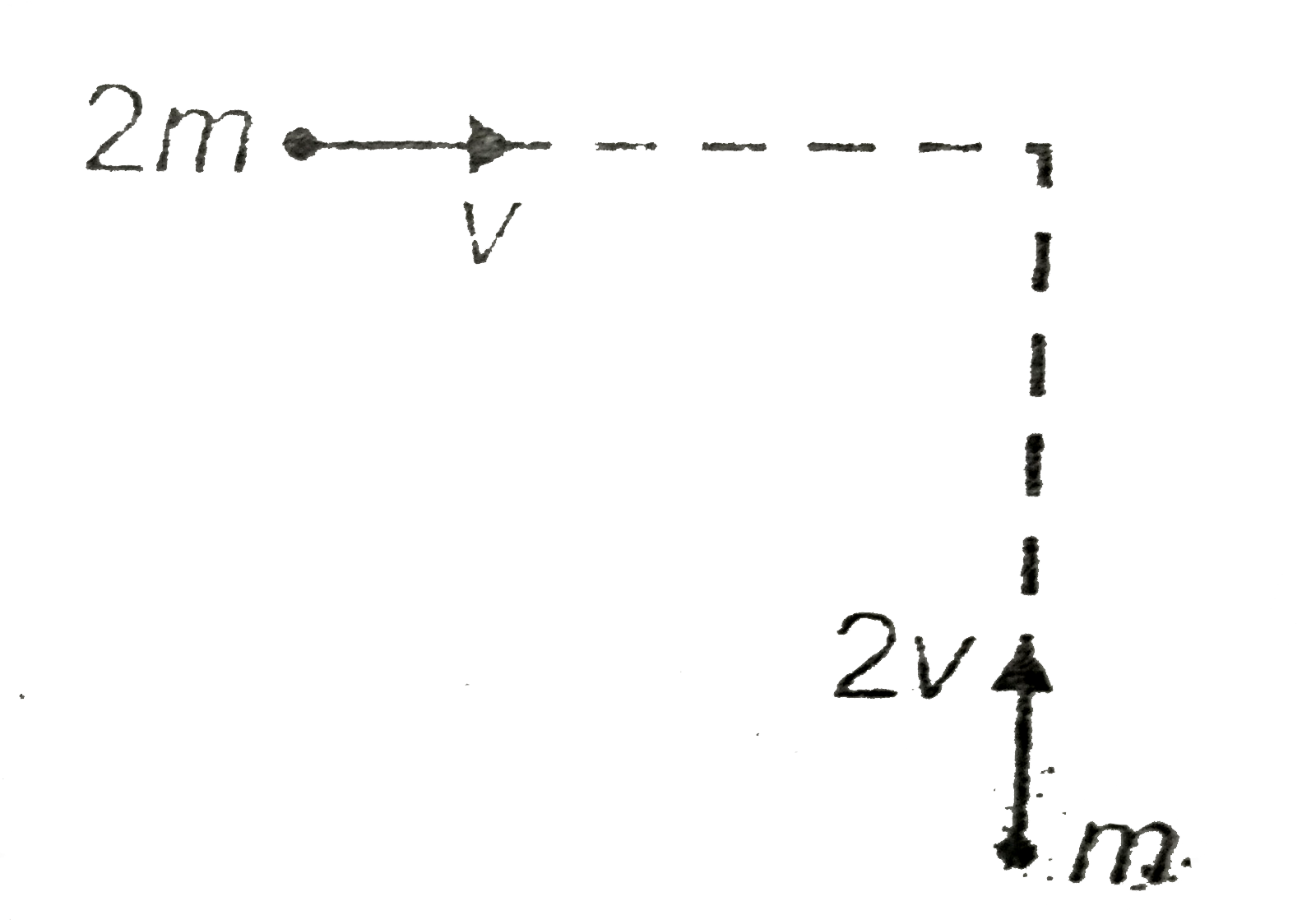A famous relation in physics relates the moving mass m to the rest mass m0 of a particle in terms of its speed v and the speed of light c.( This relation first arose as a consequence of the special theory of relativity due to Albert Einstein). A body recalls the relation almost correctly but forgets where to put the constant c . He writes m=m0(1−V2)1/2. Guess where to put the missing c.
To solve the problem of where to place the constant c in the given equation relating moving mass m to rest mass m0, we need to analyze the dimensions of the terms involved.
1. Understanding the Given Equation:
The body wrote the equation as:
\(
m = \frac{m_0}{\sqrt{1 - v^2}}
\)
Here, m is the moving mass, m0 is the rest mass, and v is the speed of the particle.
2. Identifying the Dimensions:
- The dimension of mass (m and m0) is denoted as \((M)\).
- The dimension of velocity (v) is given by \((L)(T)^{-1}\).
3. Calculating the Dimension of v2:
- The dimension of \(v^2\) is:
\(
(v^2) = \left((L)(T)^{-1}\right)^2 = (L^2)(T)^{-2}
\)
4. Analyzing the Expression Inside the Square Root:
- The term \(1 - v^2\) must be dimensionless because it is being subtracted from 1. Therefore, we need to introduce the speed of light c to make \(v^2\) dimensionless.
- To make \(v^2\) dimensionless, we can divide it by \(c^2\):
\(
\frac{v^2}{c^2}
\)
This term is dimensionless since:
\(
(c^2) = \left((L)(T)^{-1}\right)^2 = (L^2)(T)^{-2}
\)
Thus, \(\frac{(L^2)(T)^{-2}}{(L^2)(T)^{-2}} = 1\).
5. Revising the Equation:
- We can now rewrite the equation as:
\(
m = \frac{m_0}{\sqrt{1 - \frac{v^2}{c^2}}}
\)
6. Final Result:
- The correct relation that includes the speed of light c is:
\(
m = \frac{m_0}{\sqrt{1 - \frac{v^2}{c^2}}}
\)
The body wrote the equation as:
\(
m = \frac{m_0}{\sqrt{1 - v^2}}
\)
Here, m is the moving mass, m0 is the rest mass, and v is the speed of the particle.
- The dimension of mass (m and m0) is denoted as \((M)\).
- The dimension of velocity (v) is given by \((L)(T)^{-1}\).
- The dimension of \(v^2\) is:
\(
(v^2) = \left((L)(T)^{-1}\right)^2 = (L^2)(T)^{-2}
\)
- The term \(1 - v^2\) must be dimensionless because it is being subtracted from 1. Therefore, we need to introduce the speed of light c to make \(v^2\) dimensionless.
- To make \(v^2\) dimensionless, we can divide it by \(c^2\):
\(
\frac{v^2}{c^2}
\)
This term is dimensionless since:
\(
(c^2) = \left((L)(T)^{-1}\right)^2 = (L^2)(T)^{-2}
\)
Thus, \(\frac{(L^2)(T)^{-2}}{(L^2)(T)^{-2}} = 1\).
- We can now rewrite the equation as:
\(
m = \frac{m_0}{\sqrt{1 - \frac{v^2}{c^2}}}
\)
- The correct relation that includes the speed of light c is:
\(
m = \frac{m_0}{\sqrt{1 - \frac{v^2}{c^2}}}
\)
Topper's Solved these Questions
- DIMENSIONS & MEASUREMENTBook:CENGAGE PHYSICS ENGLISHChapter:DIMENSIONS & MEASUREMENTExercise:Exercise 1.1
Explore 16 Videos
- DIMENSIONS & MEASUREMENTBook:CENGAGE PHYSICS ENGLISHChapter:DIMENSIONS & MEASUREMENTExercise:Exercise 1.2
Explore 6 Videos
- CENTRE OF MASSBook:CENGAGE PHYSICS ENGLISHChapter:CENTRE OF MASSExercise:INTEGER_TYPE
Explore 1 Video
- FLUID MECHANICSBook:CENGAGE PHYSICS ENGLISHChapter:FLUID MECHANICSExercise:INTEGER_TYPE
Explore 1 Video
Similar Questions
If the material particle is moving with velocity v and the velocity of light is c, then mass of particle is taken as (m0 is rest mass)
View SolutionTheory of relativity reveals that mass can be converted into energy. The energy E so obtained is proportional to certain powers of mass m and the speed c of light. Guess a relation among the quantities using the method of dimensions.
View SolutionIf two particles of masses m1 and m2 are projected vertically upwards with speed v1 and v2, then the acceleration of the centre of mass of the system is
View SolutionA particle of mass 2m moving with velocity v strikes a stationary particle of mass 3m and sticks to it . The speed of the system will be
View SolutionA bullet of mass m leaves a gun of mass M kept on a smooth horizontal surface . If the speed of the bullet relative to the gun is v , the magnitude of recoil speed of the gun will be
View SolutionA stone of mass m1 moving at uniform speed v suddenly explodes into two fragments. If the fragment of mass m2 is at rest, the speed of the other fragment is
View SolutionA particle of mass m moving with speed V collides elastically with another particle of mass 2m. Find speed of smaller mass after head on collision
View SolutionWhat will be the relation between the T1 of gas 1 with M1=56 and T2 of gas 2 with M2=44 if the average speed of gas 1 is equal to most probable speed of gas 2?
View SolutionTwo particles of mass 2m and m moving with speed v and 2v respectively pependicular to each other collides perfectly inelastically, then

Speed of the particles after collision
View SolutionIf mass of an atom is M moving with speed v, what will be its speed after the emission of an α-particle if speed of α-particle is zero ?
View Solution